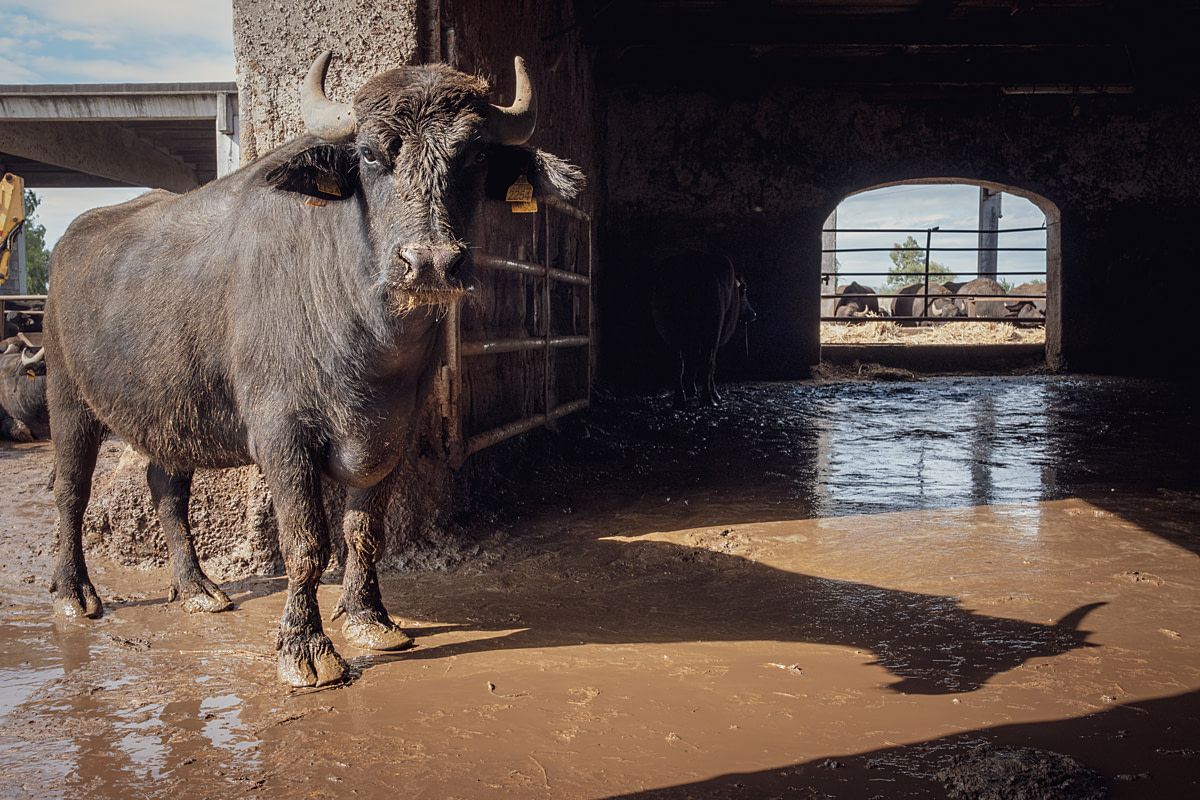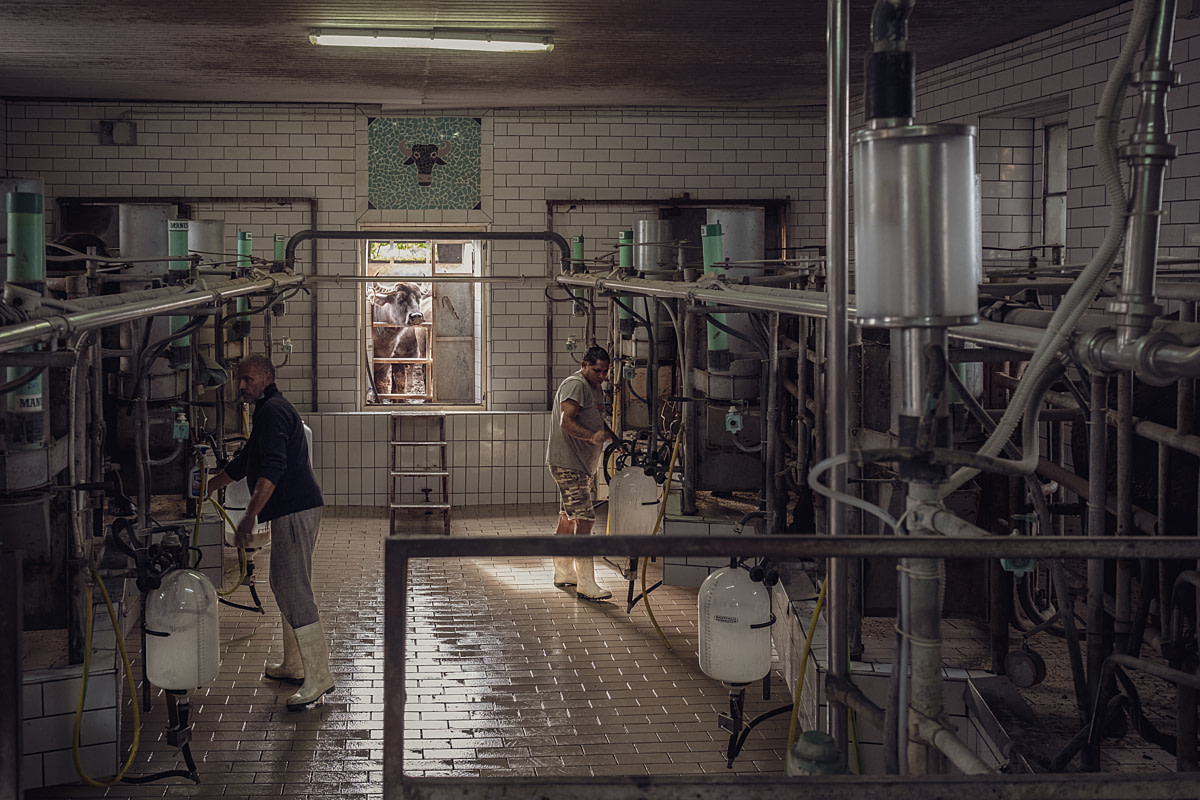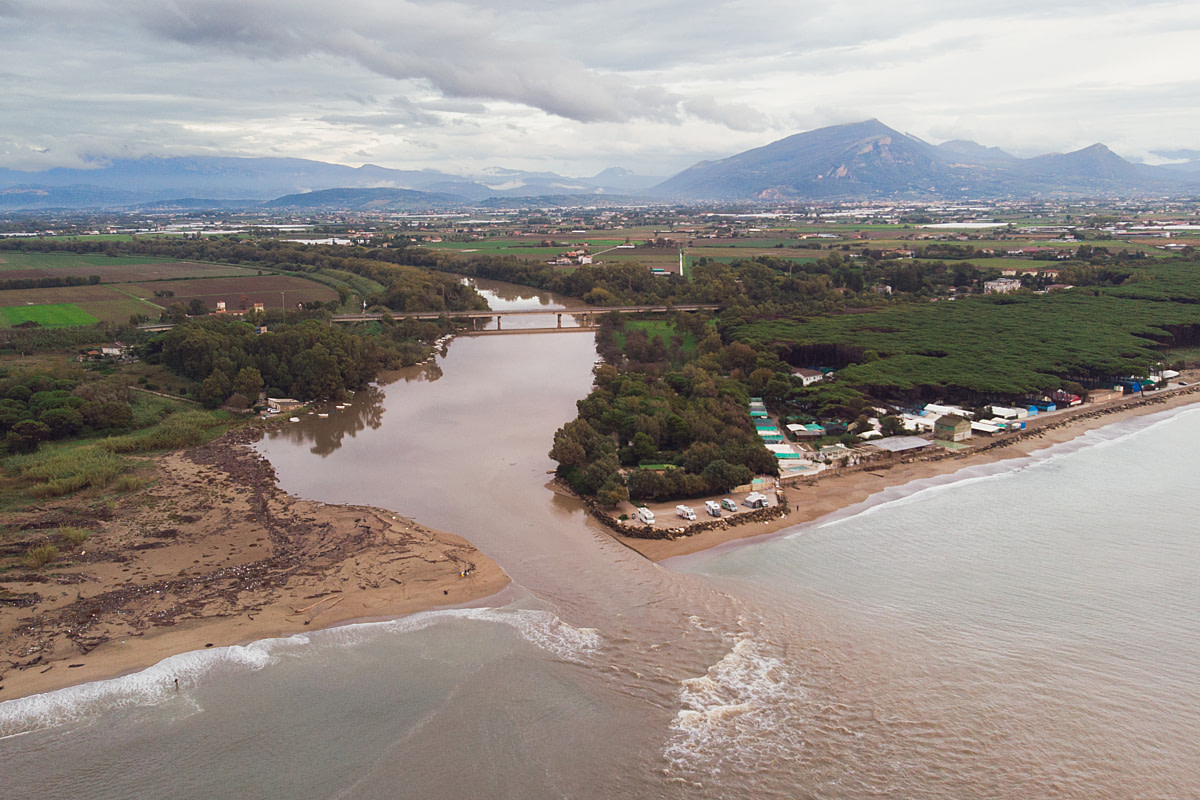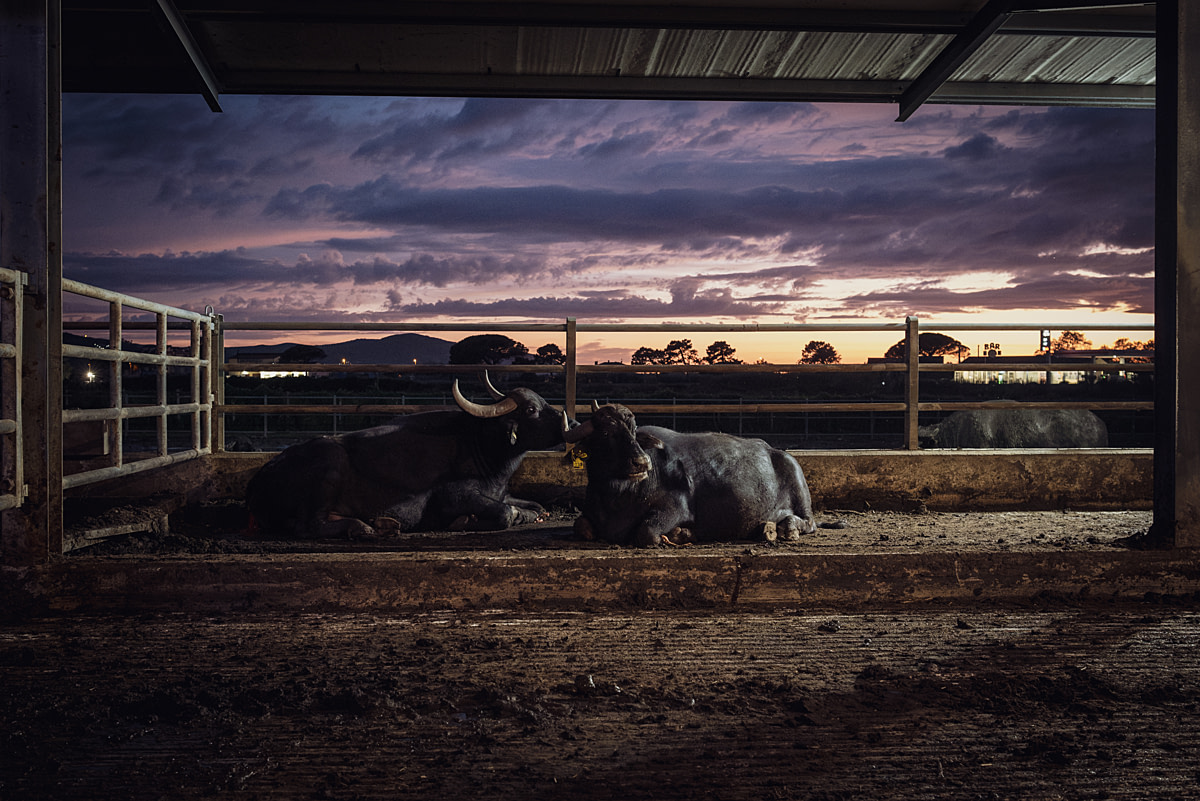A curious water buffalo cow makes eye contact from the entrance of an old building at an intensive buffalo dairy farm, standing on its wet, dirty floor. Magliulo Dairy Farm, San Tammaro, Caserta, Italy, 2024.
Raffaele Petralla / We Animals
Dairy is a seemingly benign product. Cheese is coveted. And food with a “Made in Italy” stamp instantly gets classified as something grander and more romantic than anything we can get elsewhere.
An in-depth investigation into the Mozzarella di Bufala Campana DOP industry in Italy reveals a stark contrast between the idyllic image often portrayed by its marketing and the troubling realities of its production.
With Mozzarella di Bufala being the most popular Italian cheese internationally, this story exposes the environmental, economic, and animal welfare issues behind the celebrated industry.
Italian photojournalists Arianna Fraccon and Raffaele Petralla got their feet (literally) dirty to document the story of buffalo mozzarella. What they found was an industry rampant with hidden abuses, from environmental pollution and widespread animal suffering to exploitation within the supply chain.
Behind the “Made in Italy” label, which conveys quality and tradition, are alarming practices that undermine these values.
While Mozzarella di Bufala is marketed as a symbol of Italian excellence, our investigation paints a different picture of what it takes to feed the high demand for this delicacy.
Our investigation uncovered evidence of the following:
- Animal suffering: Buffaloes are subjected to harsh conditions, including restrictive confinement and poorly regulated farming practices. The animals are treated as production machines and display unnatural behaviours, far from the idyllic pasture-based lives suggested by advertising.
- Environmental damage: Nitrate pollution from buffalo waste has severely impacted local water systems in Campania, affecting biodiversity and local communities’ health. Several farms also resort to illegal practices, including improper sewage disposal in waterways, exacerbating the region’s environmental decline.
- Misleading marketing: Brands like Garofalo and La Marchesa continue to use the “Made in Italy” narrative, invoking images of pristine landscapes and happy buffaloes while ignoring the grim realities behind their production. The advertising often masks these issues and paints an unrealistic picture of animal welfare and sustainability.
- Economic challenges: Amidst global demand, farmers struggle with falling milk prices—mainly due to corporate pressure and the rise of large-scale industrial production—placing local communities under financial strain and impacting the quality of the mozzarella they produce.

Tourists are invited to taste buffalo mozzarella cheese bites during a guided tour at an intensive water buffalo dairy farm. Vannulo Buffalo Dairy Farm, Capaccio Paestum, Salerno, Italy, 2024.
Raffaele Petralla / We Animals

Excrement coats the legs of water buffalo cows standing on a floor thickly covered with waste at an intensive buffalo dairy farm. Cooperativa Ponte Sant’Antonio, San Tammaro, Caserta, Italy, 2024.
Raffaele Petralla / We Animals
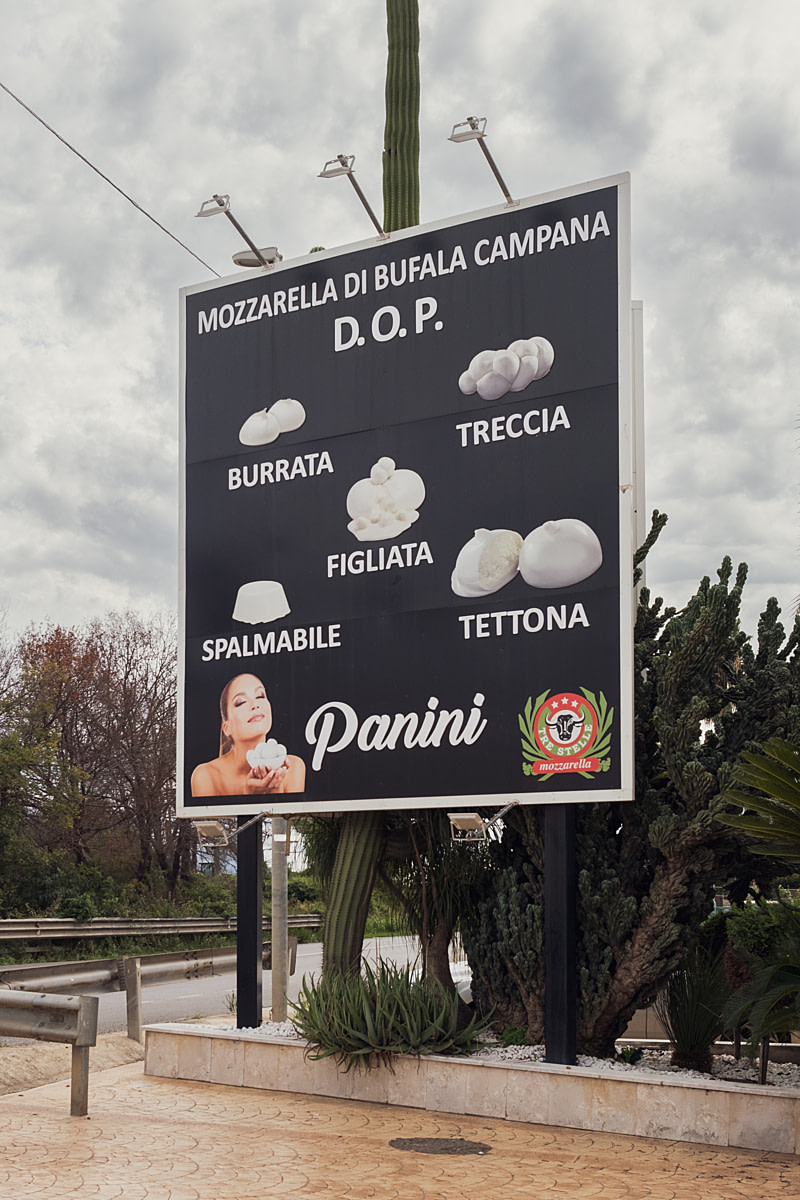
A billboard for Tre Stelle Dairy stands beside a highway, promoting buffalo mozzarella products with names suggestive of motherhood and female anatomy. The dairy’s wealthy ownership, allegedly enriched by its mozzarella farming business, faced arrest in 2019, accused of using mafia-like intimidation to acquire struggling buffalo farms in the Capaccio and Eboli areas, drawing scrutiny over related assets. Tre Stelle Dairy Shop, Eboli, Salerno, Italy, 2024.
Raffaele Petralla / We Animals
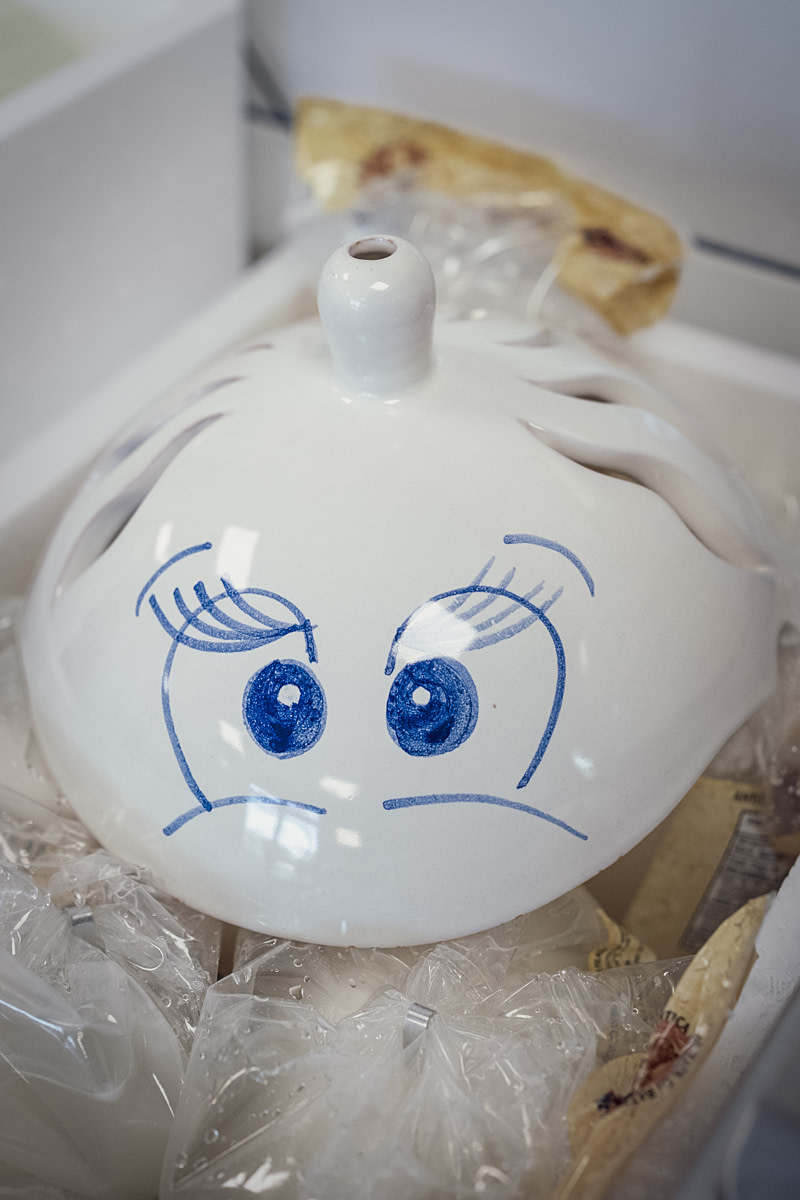
A food holder shaped like “La Zizzona,” the dairy’s signature buffalo mozzarella brand, sits on top of packaged cheeses at its shop and production facility. “Zizzona” is Campanian dialect for “large breast.” La Zizzona Dairy, Battipaglia, Salerno, Italy, 2024.
Raffaele Petralla / We Animals
Since the mid-1990s, the buffalo mozzarella industry has grown exponentially, with many family operations transforming into intensive farms where hundreds of animals are kept in restricted spaces and inadequate environments, without any enrichment. Unlike the pastoral scenes promoted by the industry, the animals are frequently housed on wet concrete floors often coated with excrement in strong-smelling, unsanitary conditions.
As of 2024, the Province of Caserta in Campania has the country’s largest concentration of water buffalo, with more than 186,000 animals used for mozzarella production.
A water buffalo cow at an intensive buffalo dairy farm looks curiously through a doorway into a milking parlour as workers collect milk from the cows inside. Glass jars at each milking station receive the milk from each cow. Barlotti Buffalo Dairy Farm, Capaccio Paestum, Salerno, Italy, 2024.
Raffaele Petralla / We Animals
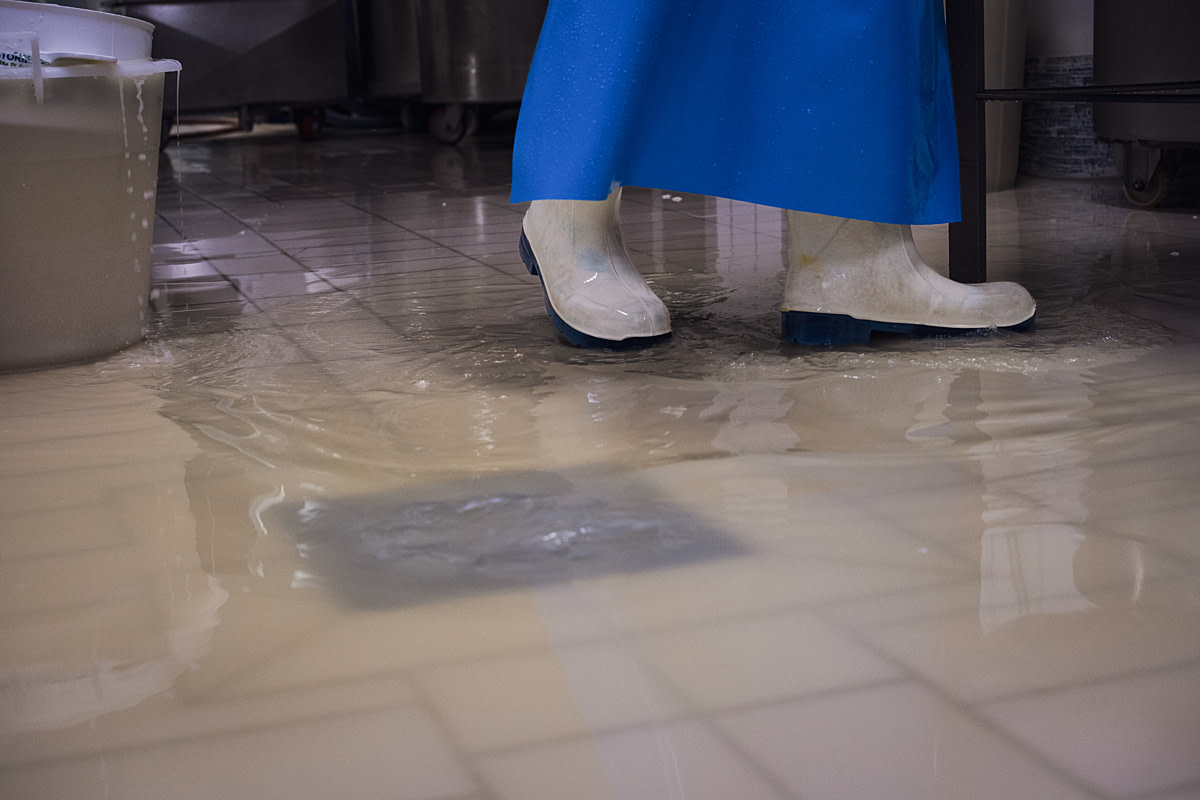
Raffaele Petralla / We Animals
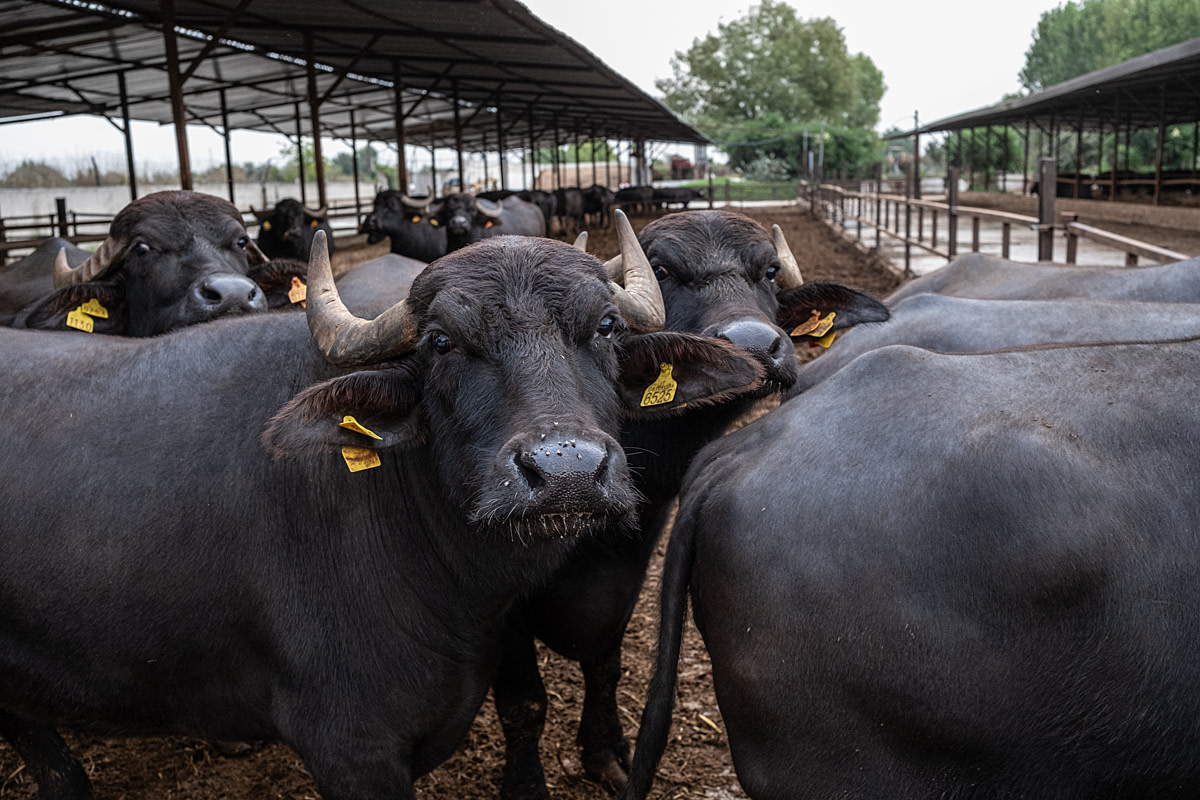
Raffaele Petralla / We Animals
- France is the leading destination for Italian cheese and dairy exports, with a 34 percent share of the French import market.
- Germany, Spain, the United Kingdom, and France together account for over 60 percent of Mozzarella di Bufala Campana PDO exports.
- The United States and Japan are growing markets for buffalo mozzarella exports.

Antonio Palmieri, owner of Tenuta Vannulo, an intensive water buffalo dairy farm, poses in his office. The farm houses approximately 600 water buffalo cows, with cows currently in milk production kept in a visitor-accessible paddock. Other sheds house cows on a production break, males, and calves. The farm produces 2,000 kilograms of milk daily, processed into approximately 400 to 450 kilograms of buffalo mozzarella, plus ricotta, yogurt and ice cream, all sold exclusively through direct sales. Vannulo Buffalo Dairy Farm, Capaccio Paestum, Salerno, Italy, 2024.
Raffaele Petralla / We Animals
“In the past three years, in the Capaccio area, we have issued approximately 17 administrative sanctions totaling over €82,000. During inspections, it often emerged that not only was there illegal waste management, but that this waste also had a significant environmental impact, causing an alteration of environmental matrices. In such cases, this constitutes the crime of environmental damage, which carries far more serious consequences.” — Alessio Manca, Commander of the Agropoli Coast Guard
Mozzarella di Bufala Campana, a Protected Designation of Origin (PDO) product in central and southern Italy, is considered one of the country’s most prominent PDO products. In some municipalities in the province of Salerno, the number of buffalo raised for mozzarella production exceeds the number of inhabitants, raising concerns about the industry’s environmental impact.
An aerial view of murky brown water flowing through agricultural land and out the mouth of the Sele River into the Gulf of Salerno in the Tyrrhenian Sea. According to local residents, effluent from intensive buffalo dairy farms enters neighboring rivers, most noticeably during rainfall. Eboli, Salerno, Italy, 2024.
Raffaele Petralla / We Animals
Rainwater carries farmed animal effluent from fields adjacent to water buffalo farms into the Sele River, posing a threat to the environment. Additionally, these waterborne pollutants, containing high concentrations of nitrogen and phosphorus, can cause eutrophication – excessive nutrient enrichment that leads to algal blooms and oxygen depletion in waterways. Altavilla Silentina, Caserta, Italy, 2024.
Arianna Fraccon / We Animals
An aerial view of an intensive buffalo dairy farm that also operates as a tourist attraction, featuring a restaurant, bar and yogurt shop. The facility includes a large lawn where visitors can stroll while patronizing the restaurant and store which sells buffalo milk products. Il Granato Buffalo Dairy Farm, Capaccio Paestum, Salerno, Italy, 2024.
Raffaele Petralla / We Animals
“As part of my profession, I have visited several buffalo farms alongside law enforcement, and I was able to observe what they were hiding. What shocked me the most was seeing female buffaloes that could no longer walk; the floor was inadequate, and their hooves had grown excessively. While walking through the nearby fields, we also found what seemed like a bone yard: a real cemetery of young male buffaloes.”— Alfredo Riccio – Citizen, activist, and parliamentary assistant
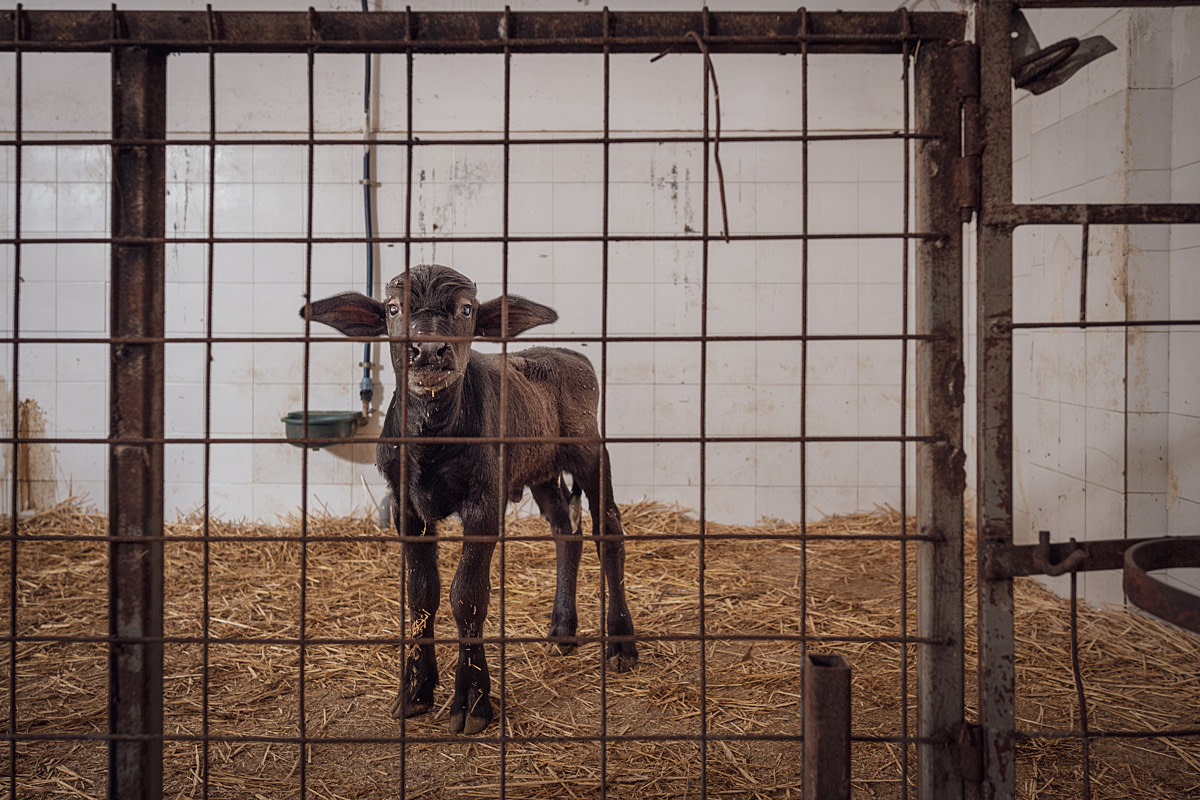
A frightened male water buffalo calf, only days old, peers from a pen at an intensive buffalo dairy farm. Unlike female calves, his ear remains untagged as he will be killed within days, likely without being registered. Pierri Buffalo Dairy Farm, Capaccio Paestum, Salerno, Italy, 2024.
Raffaele Petralla / We Animals

An adult water buffalo cow looks out from a pen at an intensive buffalo dairy farm. Her muzzle is tightly fitted with a spiked anti-suckling device to restrict her from suckling from other buffalo cows in the pen. Agribios Buffalo Dairy Farm, Capaccio Paestum, Salerno, Italy, 2024.
Raffaele Petralla / We Animals
A water buffalo cow pulls her head away as young tourists crowd around, awkwardly reaching toward her muzzle while other cows eat hay beside them at an intensive buffalo dairy farm. Vannulo Buffalo Dairy Farm, Capaccio Paestum, Salerno, Italy, 2024.
Arianna Fraccon / We Animals

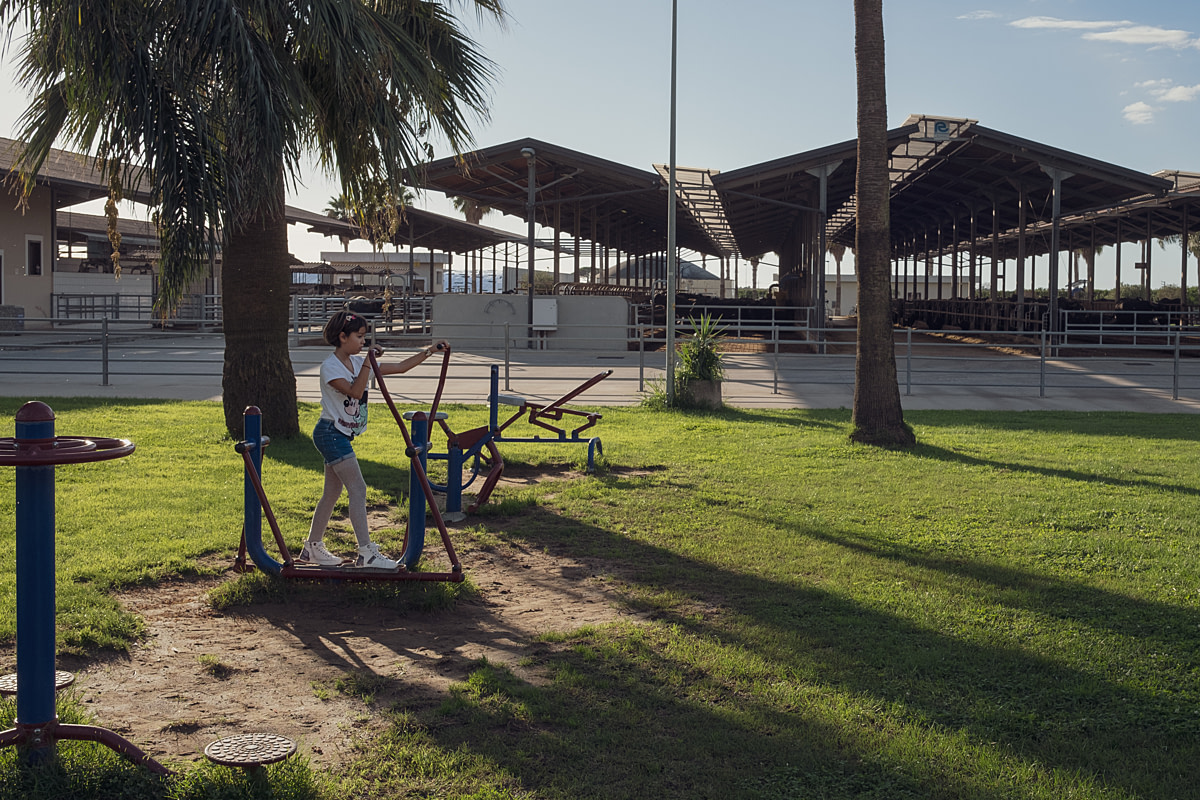
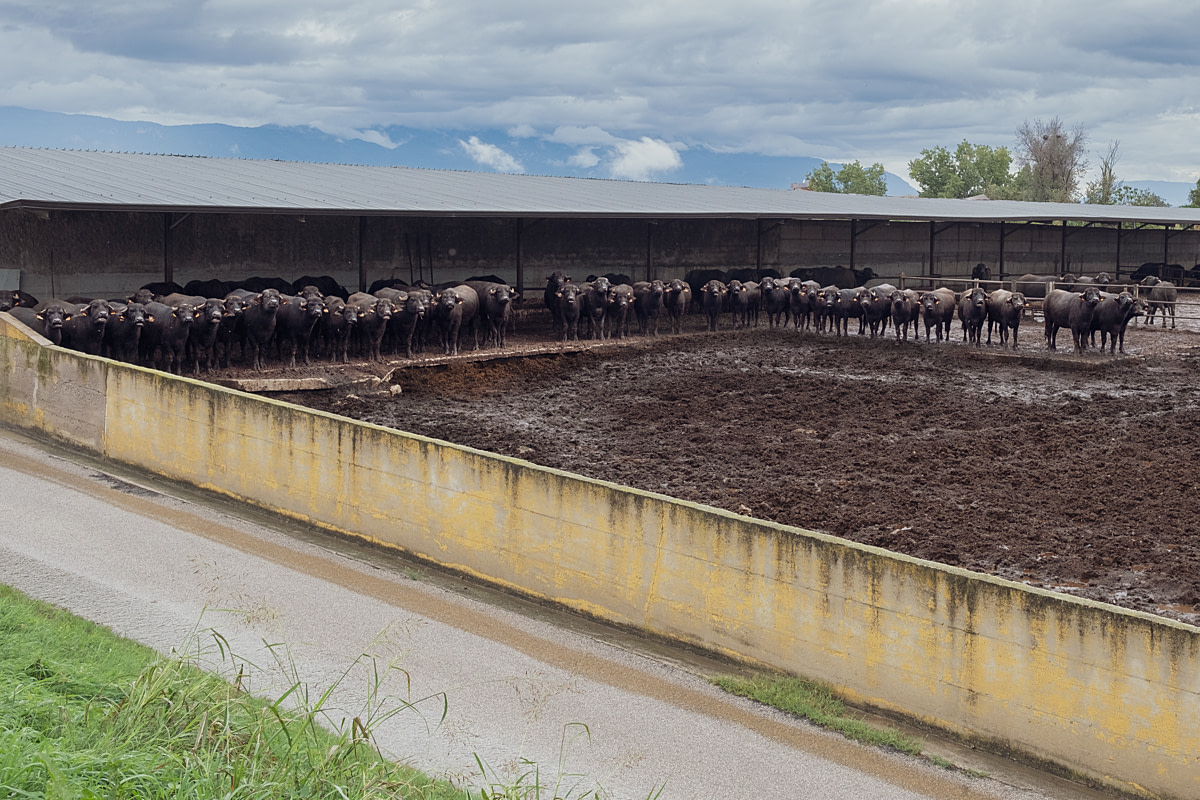

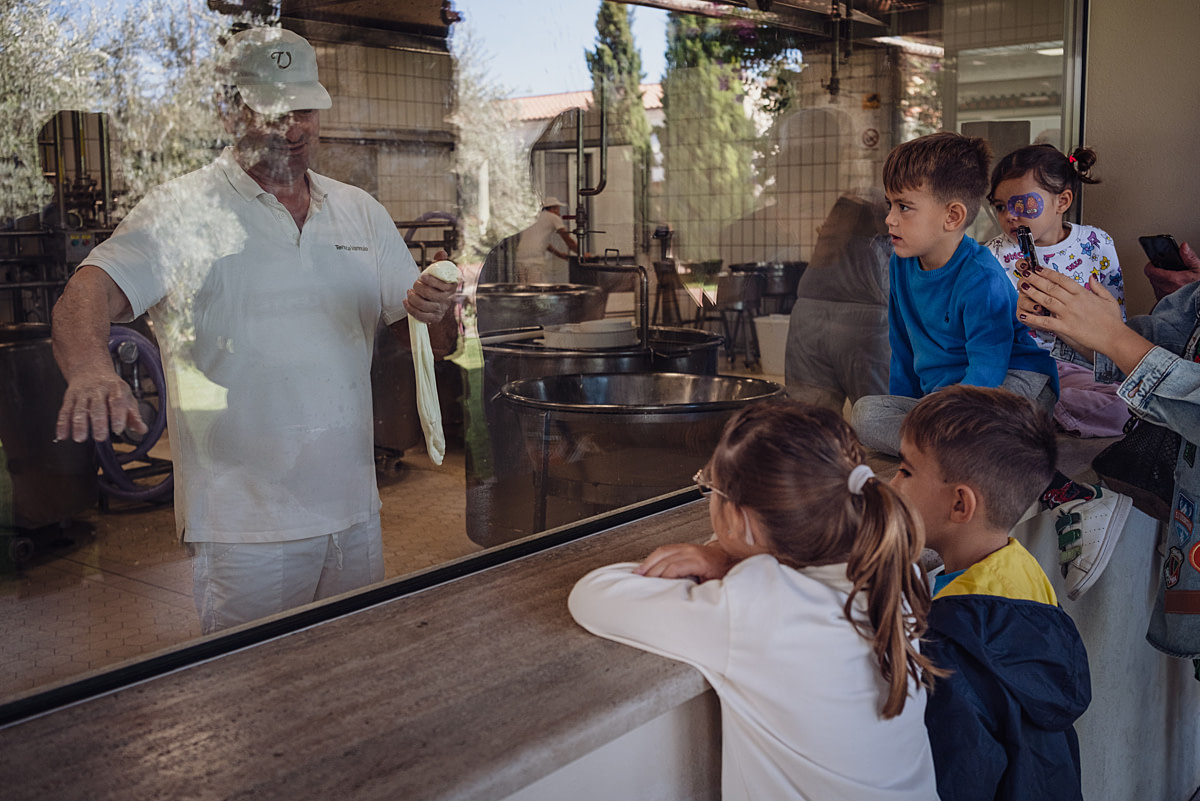
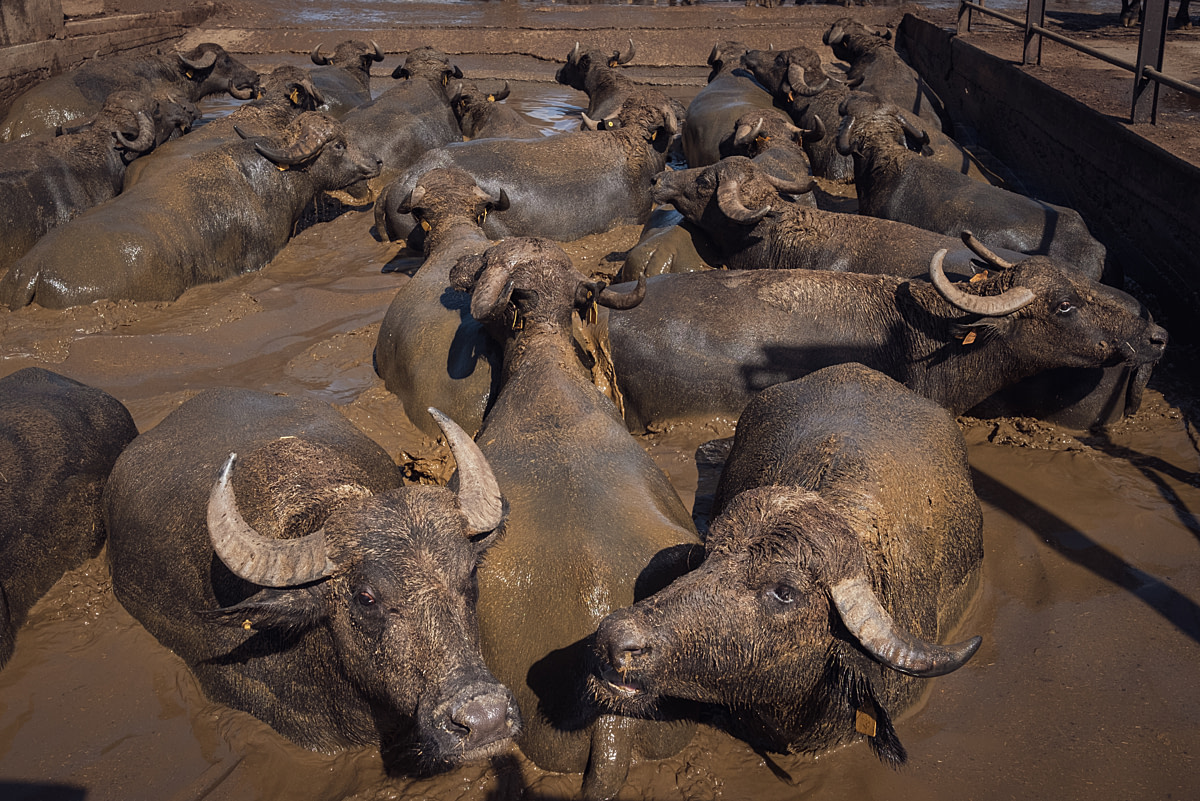
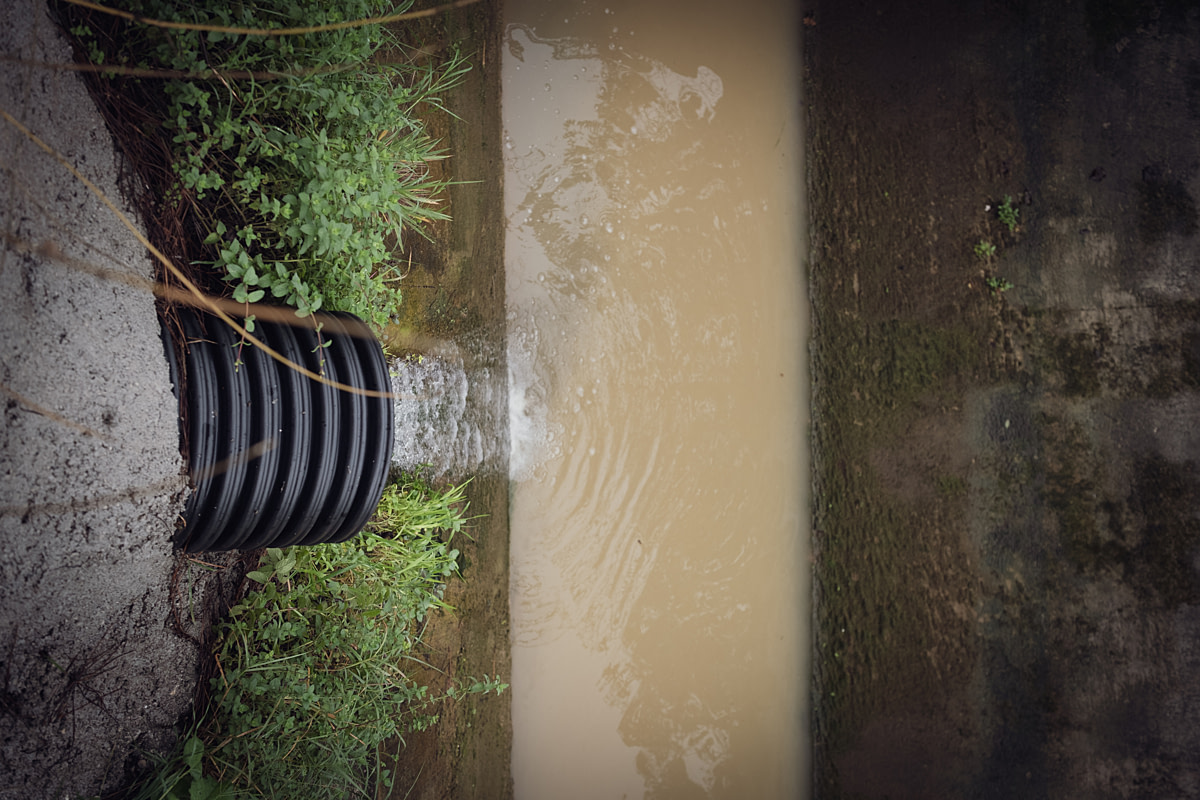


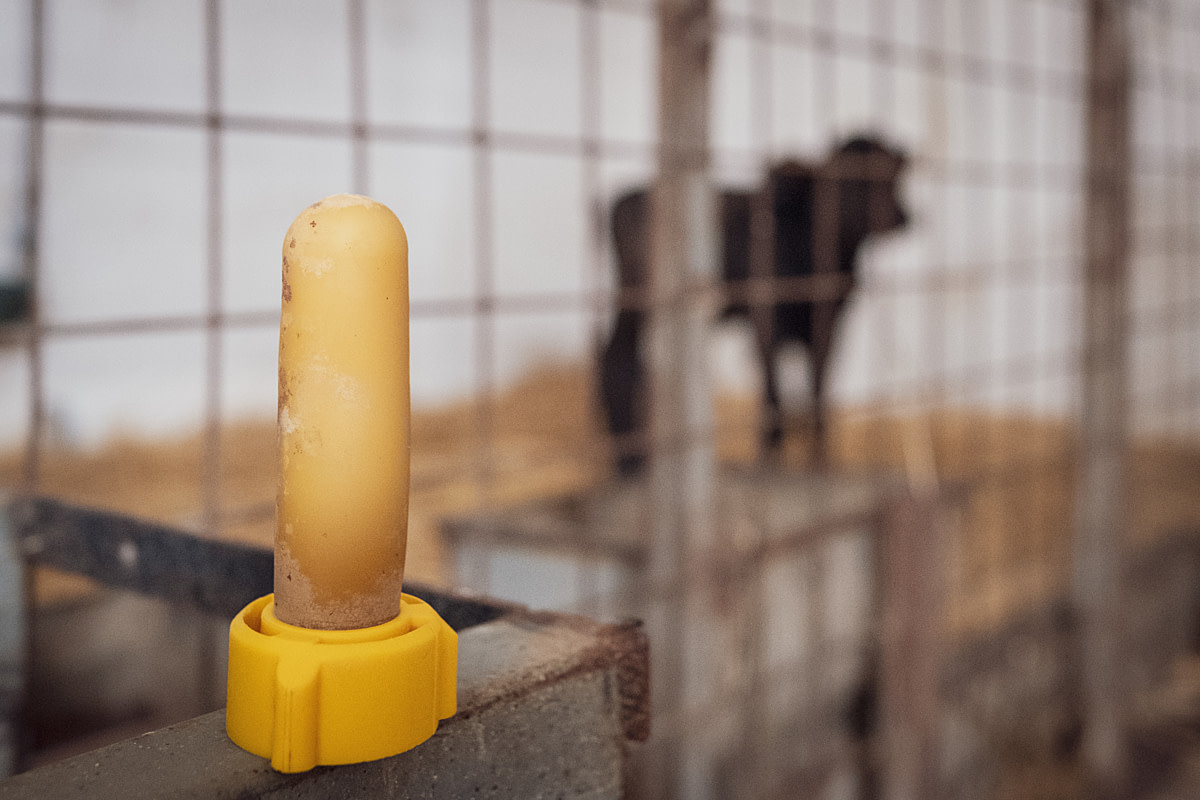
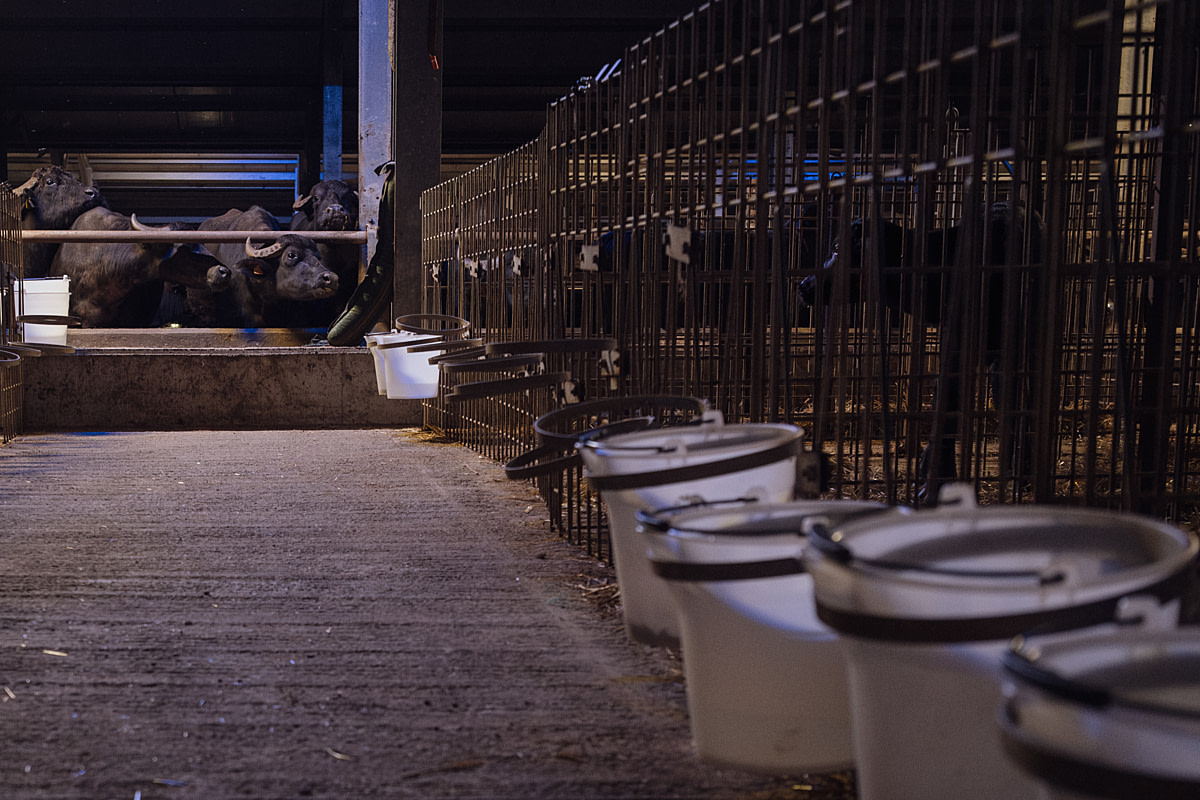
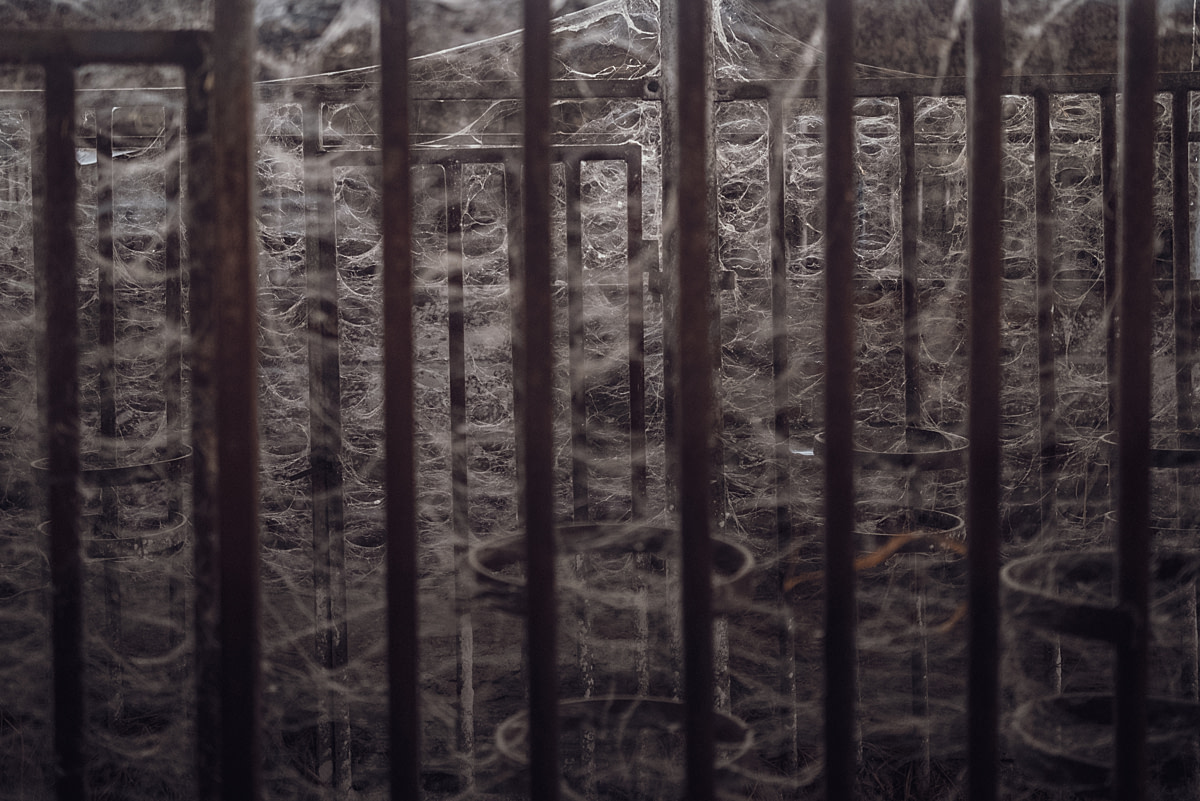
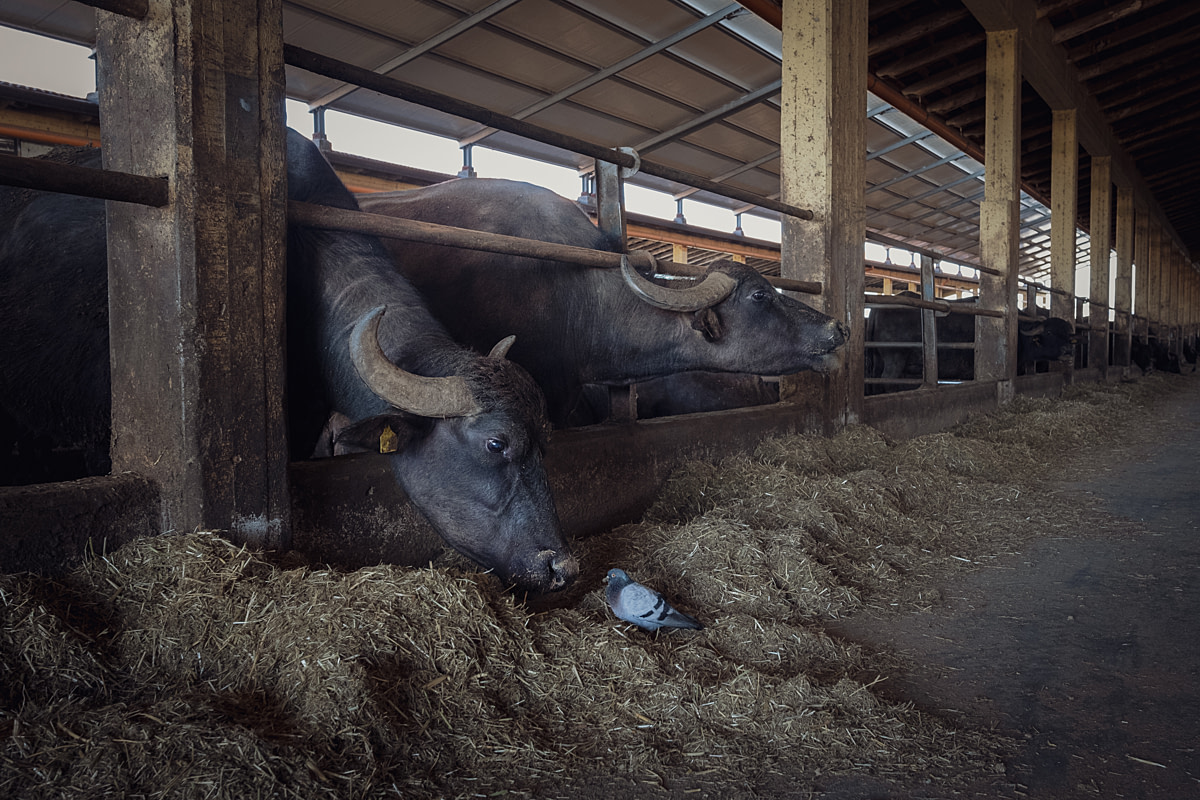
Why This Matters Now
Buffalo mozzarella is undeniably popular. A search on the New York Times website for “Mozzarella” generates 6,309 results alone. As the saying goes, “Food is the way to the heart,” and the story of buffalo mozzarella production is deeply personal for many, but if we look closer, we’ll learn the true cost behind its demand.
Mozzarella di Bufala Campana PDO is a product of Italian excellence, appreciated both nationally and internationally. In 2024, production reached 55.7 million kilograms, with exports accounting for approximately 36.8 percent.

A cheesemaker applies a string noose to traditionally shape buffalo scamorza cheese at a water buffalo mozzarella dairy. Di Guida Dairy, Eboli, Salerno, Italy, 2024.
Raffaele Petralla / We Animals
At a time when people are carefully reading labels, adding so much value to the country of origin, this story offers us a glimpse of what’s behind a label like “Made in Italy.”
“Buffaloes are majestic animals, extremely social and communicative. From their gazes, their stereotyped movements, and the marks on their bodies, the suffering they are forced to endure by an industry that seeks to erase their individuality and turn them into true production machines is clearly evident.” — Raffaele Petralla and Arianna Fraccon
Two water buffalo cows rest and on the concrete floor inside a paddock on an intensive buffalo dairy farm. Each gave birth a few hours earlier to male calves that will be killed the next day. The cow on the left licks her companion. Agribios Buffalo Dairy Farm, Capaccio Paestum, Salerno, Italy, 2024.
Raffaele Petralla / We Animals
Take Action
Share our investigation video and use the hashtag #LookCloserMozzarella on social media to help us expose the animals within our food systems.
Visit our stock platform to view and download the full set of visuals from this investigation.

